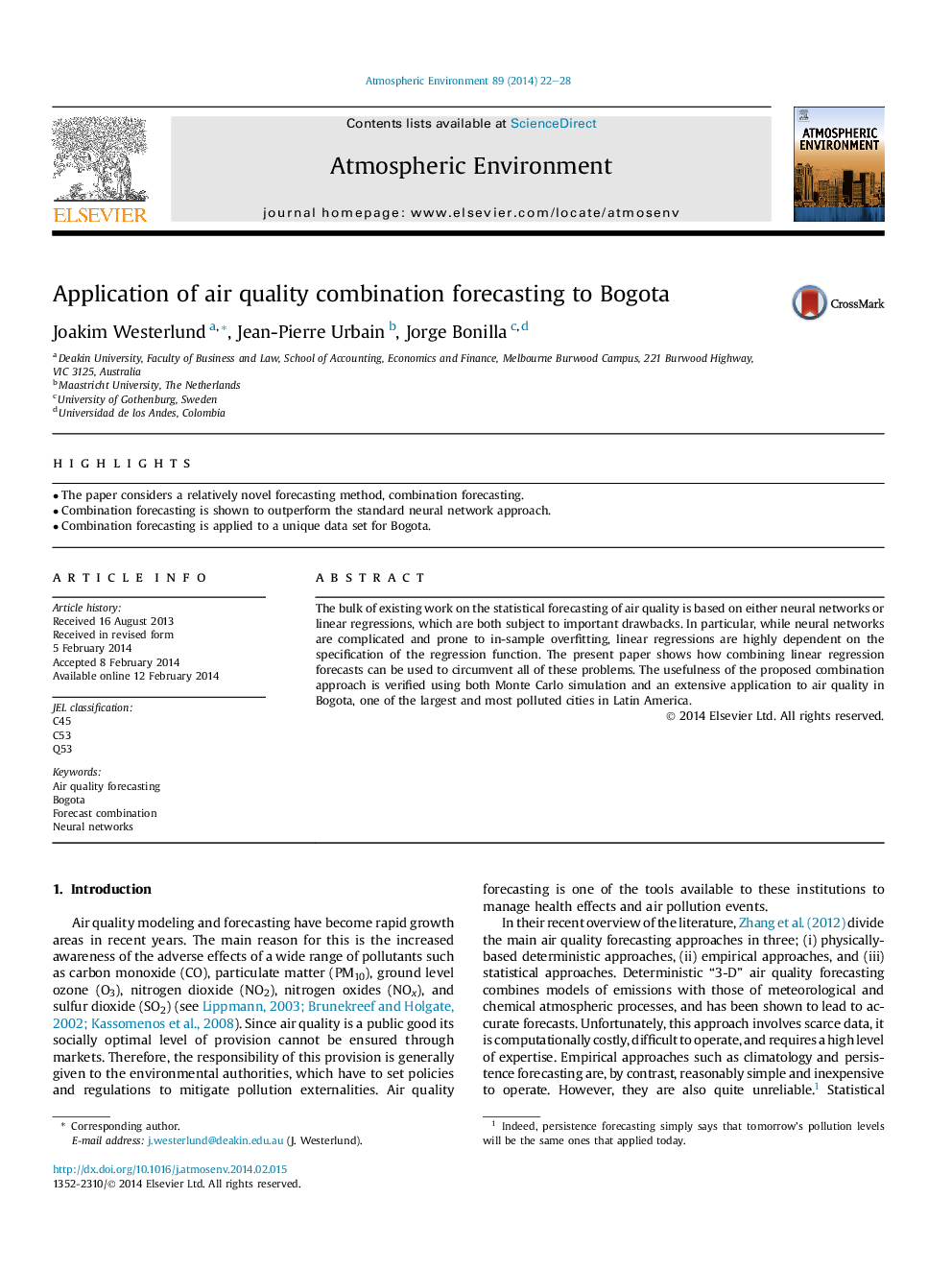| Article ID | Journal | Published Year | Pages | File Type |
|---|---|---|---|---|
| 6340128 | Atmospheric Environment | 2014 | 7 Pages |
Abstract
The bulk of existing work on the statistical forecasting of air quality is based on either neural networks or linear regressions, which are both subject to important drawbacks. In particular, while neural networks are complicated and prone to in-sample overfitting, linear regressions are highly dependent on the specification of the regression function. The present paper shows how combining linear regression forecasts can be used to circumvent all of these problems. The usefulness of the proposed combination approach is verified using both Monte Carlo simulation and an extensive application to air quality in Bogota, one of the largest and most polluted cities in Latin America.
Related Topics
Physical Sciences and Engineering
Earth and Planetary Sciences
Atmospheric Science
Authors
Joakim Westerlund, Jean-Pierre Urbain, Jorge Bonilla,
